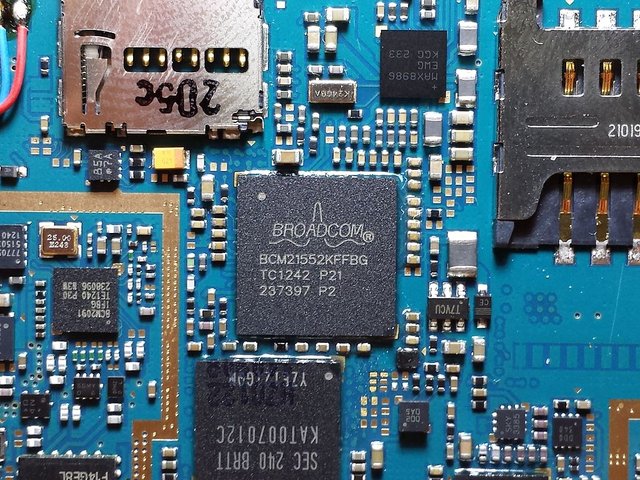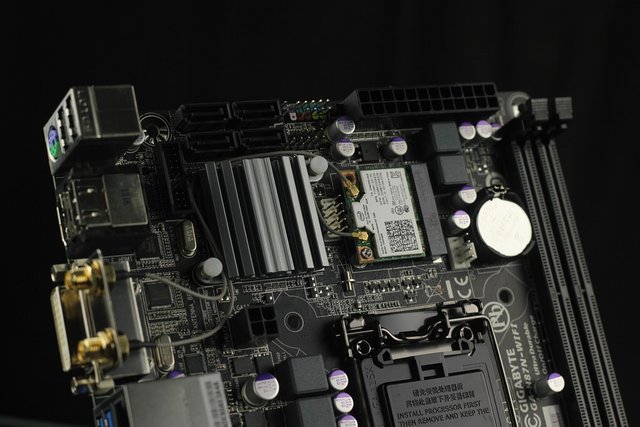System on Chips: The components on your smartphone and iPad.
Good day everyone. Let's get the ball rolling. In my previous post, I introduced system on Chips. I also listed some of it's application. However, in this post, I will be talking about how our smart phones, those little computers we carry about all around works as if they are our giant computer. I would ask you a question; how possible is it for you to type, send and receive messages from your small computer, and yet listen to music watch live video and even send and receive music, video and many other multimedia messages?. Well I guess the answer is not far fetch.
Computer has been compressed to a very small and portable device. The portability of the computer makes us think that it is no more computer but a phone or means of communication.
Gone are the days when all what people want to do with their phone is just to receive and make calls. Now on our smart phones and our tablet (iPad), we all seems to enjoy our new sets of portable computers using operating system (OS). But do we yet have any idea how they are able to meets customer demands?. It's simply because of the system on Chips (SoC) technology. Now that our phones are used for browsing, playing music, taking pictures and many more core- functionality. Because all these core functionality is not peculiar with our old telephones, therefore components and software that gives phones these abilities must be incorporated. These components are also found on our laptops and our computer on the desk.

SoC of Samsung Galaxy phone:By Köf3 - Own work, CC BY-SA 3.0,
The iPad and smart phones are small in size when compared with our computer on desk, so also the internal space which is responsible for accommodating internal hardware like the Random Access Memory (RAM), logic board, processor and many others.
Knowing fully well that the function of these big size components are needed for our smart phones, iPad and even iPod, they must be reduced to a small size so that they can be placed into small size capacity of our smart phones and tablets for optimum functionality. It's also in this small size that the manufacturers placed a battery intended to serve the device for a long time.
Alright, i think before I go further, I should let some folks out there who doesn't know what smartphone means to know it simple definition.
A smartphone is a cellular telephone with an integrated computer and other features not originally associated with telephones, such as an operating system, Web browsing and the ability to run software applications.
Source
A big applaud to the miracle of miniaturization which makes System on Chips available for the purpose of making all the big component fits into the "small computers". Can we take a peep at the component we can find inside a system on Chips used on your smart phones? Okay let's go there.
•The Central Processing Unit.(CPU). Regardless of the functionality or core performance and uniqueness of your
smartphone, it is what gives your smartphone it's unique function. Without the CPU, your computer is just like a box behind my backyard for dropping waste I generate. The System on Chips houses alot of processors which is a product of Advanced RISC Machines (ARM) technology developed. It's this processor that takes care of most function on the iPhones, ranging from the operating system (OS) to the touch screen ability of the iPhone.
A typical CPU: Pixabay.com
Discussion about if a phone is of 800MHz or 1GHz processor is all about the speed of the central processing unit. Also a central processing unit core could be a single or dual core.
A smartphone with dual core processor operate optimally with functionality like three dimensional and 1080p high definition video capture and ability to repeat video. The SoC of the smartphone with dual-core have two central processing unit core operating at speed of 1GHz and 1.2GHz respectfully (though manufacturer dependent).
With the dual-core, you will have a quick internet surfing, enjoy your game play, several task performance, and I believe everyone loves longer battery life, this is what you enjoy on it.
However, with just a single central processing unit core, the voltage of the central processing unit must be increase; that means it will require more power and invariably reduce battery life.
•Another component is Memory of the system. In terms of memory usage, our smartphones and iPad are not different from our desktop computer. Due to need for memory, System on Chips (SoCs) was designed to have varied memory construction on the mother board.
•The next component is Graphic Processing Unit. This is a unit component that function on the iPad and smartphone for 3D games purpose. In our smartphones and iPad, the GPU is inevitable as it is responsible for organizing graphics running.
On the central processing unit, the graphic processing unit illuminate the load on it when graphics sophisticated program such as 3D is running on it.
Take for instance when you are playing a game of one person shooting, the GPU is the component that create the graphics, the hue, the quality/appearance seen on the game. It's now this GPU output that the central processing unit uses as a feed in data for it's AI (Artificial intelligence) or use it to determine the mechanics of the game.
A GPU:By FxJ - Own work, CC BY-SA 3.0,
The architectural design of Graphics Processing Unit is almost alike with that of central processing unit, the only variation you might notice among the two is that design of GPU is tailored to sufficiently carry out the computation of the graphical data. So the GPU can hardly do any other things than to fulfill graphical operation.
The mode of operation of GPU is quite different from the mode of operation of CPU, in the sense that the several processing core it possess operate at a shallow rate when compared with small number of core operating at elevated rate. The cores of GPU performs two dissimilar role.: Handling the Pixel and the Vertices.
Processing vertex basically spin about the scheme of coordinate systems. The GPU involve the handling of geometric required to replicate the the type of dimension such as the length, width and depth on the screen, and the chances of turning in three-dimensional space.
The visualize graphics we see on the screen is highly technical and demands more operating power in comparison with required operating power by vertices
•Northbridge: Between Central Processing Unit and other constituent of SoCs, the Northbridge is the bridge for communication flow and the southbridge.
• The Southbridge. This is another component that is responsible for managing various input and output work. At times, it's located on the system on Chips.
•Cellular radios. These are modem embedded on some System on Chips (SoCs) board which is responsible for network connectivity. This is highly required by operators.
•Other radio. Apart from Cellular radio, though it depends, the SoC at times contains some other unit of component which helps the smartphone for to receive other connection, such as Wi-Fi, and Bluetooth
Though this is just a tip of the iceberg, in the subsequent post, I will continue with how some of these components function effectively to make our smartphones function effectively and gives the consumers desired product.
Summary
Computer has been compressed to a very small and portable device. The portability of the computer makes us think that it is no more computer but a phone or means of communication.
Miniaturization makes System on Chips available for the purpose of making all the big component fits into the small computers.
The iPad and smart phones are small in size when compared with our computer on desk, so also the internal space which is responsible for accommodating internal hardware like the Random Access Memory (RAM), logic board, processor and many others.
A smartphone with dual core processor operate optimally with functionality like three dimensional and 1080p high definition video capture and ability to repeat video. The SoC of the smartphone with dual-core have two central processing unit core operating at speed of 1GHz and 1.2GHz respectfully though manufacturer dependent.

Congratulations @steep2308! You have completed some achievement on Steemit and have been rewarded with new badge(s) :
Click on any badge to view your own Board of Honor on SteemitBoard.
For more information about SteemitBoard, click here
If you no longer want to receive notifications, reply to this comment with the word
STOPIt is quite astonishing to think that what we can conveniently do these days with our smartphones in a matter of seconds would usually take weeks or even months to accomplish just few decades of years down the timeline, and yet we take this for granted.
No doubt, chips play a very cogent role in this accomplishment.
Thanks for providing more information about these generation saver.
Thanks very much for your beautiful and highly intelligent response. Chips make life easier for us this days.
You are welcome.
Congratulations @steep2308! You have completed some achievement on Steemit and have been rewarded with new badge(s) :
Click on any badge to view your own Board of Honor on SteemitBoard.
For more information about SteemitBoard, click here
If you no longer want to receive notifications, reply to this comment with the word
STOP